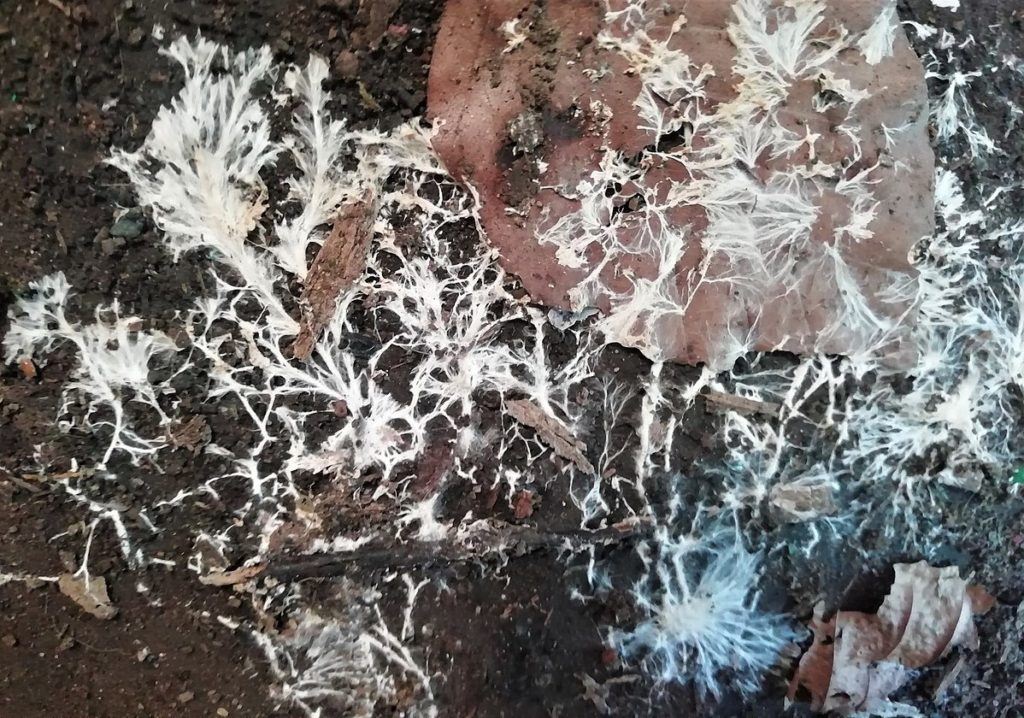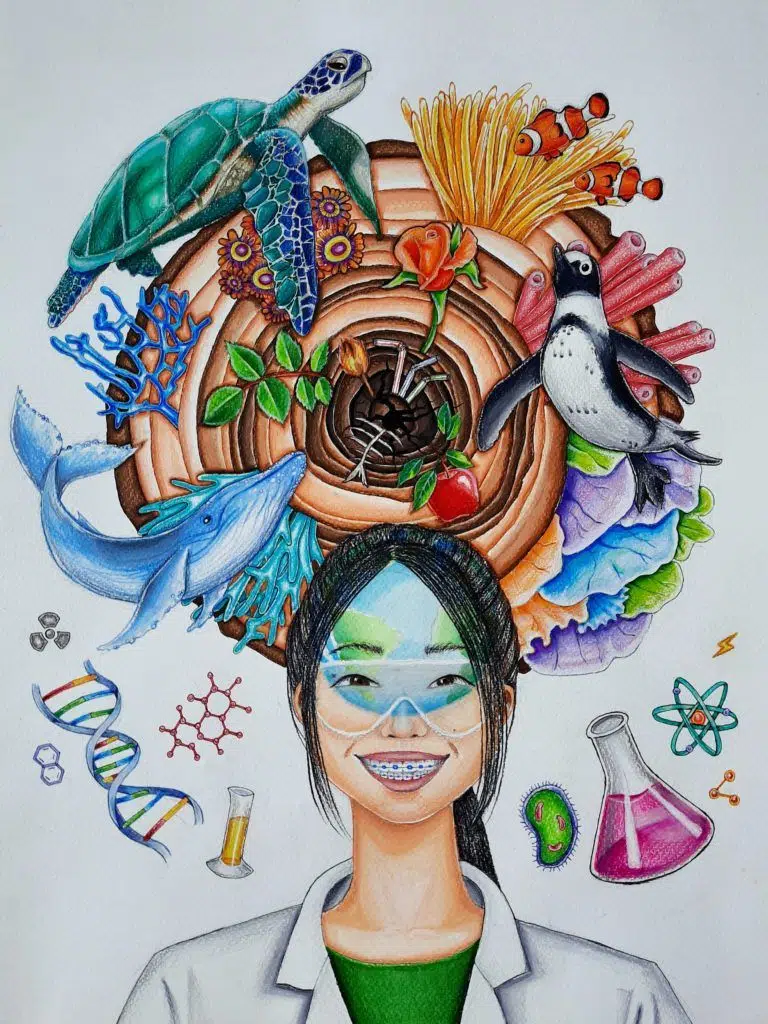
Fixing the Future With Fungus: An Unsung Climate Solution
June 28, 2022By Brooke Nind, Future Blue Youth Council Member
Featured artwork: “Forgotten Venus” Linn Soh, California
In the midst of today’s climate crisis, we often get caught up in the dire statistics and seemingly hopeless outcomes. That being said, there is plenty of positive environmental news if you know where to look. At Bow Seat, we like to amplify climate hope and positivity whenever possible. One source of such inspiration is mycelium – and the exciting innovations that scientists and businesses are doing with it.

Fungal Mycelium growth on beech leaves. Photo by Rosser1954 (CC BY-SA 4.0)
Mycelia are the foundational networks of mushrooms, formed of thin, branching tubes below ground. Mycelium is considered the vegetative body of a fungus, and later in its life cycle, it forms the fruiting body of the mushrooms we’re all familiar with. Mycelium can grow into quite complex structures over time, which scientists have employed for exciting climate innovation.
Eco-friendly biotechnology business Ecovative Design has harnessed mycelium’s growth properties to create a styrofoam alternative, among other fabrics, and even mycelium-grown foods. They’ve created growth chambers with special molds to guide the mycelium into the desired shape and structures. Considering that styrofoam can last up to 500 years in landfills before decomposing and is estimated to take up 30% of space in landfills, having an all-natural alternative is a key innovation.

Bacon grown from Mycelium from MyForest (formerly Atlast Co.), a spinoff from Ecovative.
Aside from their styrofoam alternative for packaging, Ecovative has managed to create mycelium bacon that grows and harvests within just a week, and 100% vegan mycelium leather hides grown within only nine days. In the fashion industry, companies such as MycoWorks and Bolt Threads have utilized mycelium to grow lines of all-natural, light, and breathable fabrics. Whether the product in question is food, fabric, or packaging, a variety of companies are discovering ways to create useful products that also serve as eco-friendly substitutes, all using mycelium.
Mycelium has even been used to help clean up oil spills due to its decomposing properties. Through a process called mycoremediation, mycelium can remove toxins and chemicals from soil and water, providing a major ecological service by cleansing the surrounding environment. The oyster mushroom in particular produces enzymes that can break down petroleum, and has been used to help clean up oil left over from Chevron’s oil spill in the Ecuadorian Amazon River. The mycelium is often combined with other materials like wood chips or compost to help absorb the hydrocarbons in petroleum better. It then will break the hydrocarbons down into lighter-weight compounds. This process is repeated until researchers can declare the soil and water nontoxic.

“Resilience” by Ahrin Lee (Singapore)
With its useful and adaptable properties, mycelium is an environmental hero (and an underrated one, in my opinion)! Scientists and entrepreneurs alike have now realized its capabilities, so there’s no telling what mycelium innovations we’ll see in the near future. For now, there are already plenty to read and learn more about, or even try out for yourself. I know I’m interested in seeing what the mycelium-grown vegan bacon would taste like! Ultimately, climate innovation is a crucial and growing field–who’s to say mushrooms can’t help save our environment?
